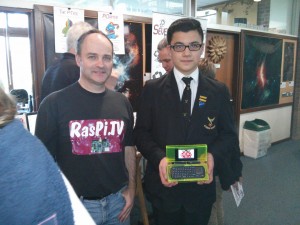|
Now, another author has stepped up and released a detailed explanation of her experience with traditional publishing deals. Having to still rely on educated speculation regarding sales figures, author HM Ward surmised that the top selling titles on Kindle at any given time are probably selling between 5,000 and 10,000 titles each day. According to her average of 7,000 titles at the fairly standard pricing of $2.99, Ward indicates that a bestselling author would net about $100,000 per week of top sales, making a traditional book deal a fairly poor financial choice. Of course, as Howey’s explanation points out, not every author will by a top grossing writer like he and Ward. This is the reason that authors need access to accurate sales data from across the industry, not just their own title sales. Without this type of information, it becomes impossible to determine which course is better by genre, reader demographic, and more. Ward takes it a step farther, explaining that transparency around sales data isn’t enough. Authors need to know highly detailed budgets and plans for marketing of any given book before agreeing to sign a contract, a fact that she stood her ground on despite the high-pressure sales pitches and ominous threats to her career that she experienced from some Big Five publishers. Without having clear information on how the publishing house intended to promote her book, Ward opted for the self-publishing and higher royalty route, a choice that has made her an incredibly high ranking author despite having turned down over $1.5 million in advances in the past year alone. Unfortunately, the withholding of information is at best a tired out model from an industry that steadfastly refuses to adapt to the changing industry, and at worst an intentional effort to keep authors ill-informed about their own careers. Whatever the root cause of the issue, authors like Ward and Howey are making it more possible for authors to make sound decisions based on data, not whims.
Transparency: Author HM Ward Discusses eBook Sales and Pricing is a post from: E-Reader News |
A Semi-automated Technology Roundup Provided by Linebaugh Public Library IT Staff | techblog.linebaugh.org
Saturday, February 15, 2014
Transparency: Author HM Ward Discusses eBook Sales and Pricing
Does the Publishing Industry Discriminate?
|
An article by Judith Rosen for Publisher’s Weekly this week indicates that African American bookstores are suffering, even during this month that is so typically a high point for sales due to the attention given the Black History Month. According to the article, the number of black bookstores who were members of the American Booksellers Association has resulted in more than 200 store closings in the last twelve years alone, down to 100 member stores from over 300 in 2002. Rosen pointed to certain economic factors, such as the destruction of major metro neighborhoods that at one time played host to bookstores who stocked black literature. That has been compounded by the loss of platforms like key magazines that at one time promoted black authors’ titles. But while it is the physical bookstores that are suffering, what is the correlation between that and the unequally low number of titles available on Kindle? Are publishers and self-published authors simply not writing and releasing books that speak to a specific market of readers? And if not, why not? One source in the article quite openly stated that black consumers simply don’t read as much, but that is too easy a statement to oversimplify, one that could quite easily be the result of a chicken-and-egg situation. Do publishers not produce as many African American titles because they, too, believe this? Or is the lack of titles that speak to the consumer the reason for this generalization? Recent news from a number of successful authors has made it quite obvious that self-publishing is the great equalizer in the book industry, one that is presumably open to authors from all walks of life. During this month of historical awareness, hopefully more concerted efforts will be made to open the doors of self-publishing to a far underserved group of readers.
Does the Publishing Industry Discriminate? is a post from: E-Reader News |
Tablet Sales Trend Discussed, Phablets Emerge Strong Player
|
Despite reports of tablet sales reaching a plateau, a report tabled by NPD Display Search claims demand for tablet devices is expected to scale new heights in the coming years. The report, titled “NPD DisplaySearch Quarterly Mobile PC Shipment and Forecast Report,” claims there will be 315 million tablet devices sold in 2014, while the figure is projected to rise to 455 million by 2017. With that many tablet devices in use, it will translate to almost 75 percent of the mobile computing device segment. "Momentum for the tablet PC market is in full swing as it has become the dominant mobile PC form factor," said Richard Shim, senior analyst at NPD DisplaySearch. "Competition is expected to increase as traditional notebook PC brands, including Lenovo, HP, and Dell update their product portfolios to emphasize tablet PCs. Increased competition will mean more attention on, and development of, various segments of the market, which will ultimately lead to greater choice and devices that better fit the needs of consumers." The constant improvement in technology coupled with a general lowering of cost of tablet devices is being held as the prime factors stimulating growth of the segment. Tablet devices now offer not only enhanced processing power but also improved displays and better battery times to make for a thoroughly enhanced tablet computing experience over what it was even two years ago. Also, the next round of tablet growth is projected to be fueled in those regions where first time buyers will make up a significant proportion. Another interesting development witnessed in the tablet space is the rise in prominence of phablets, or big screen smartphones. These are typically less than 7 inches but have cast a doubt on the usefulness of the 7 inch tablet; possibly, all 7 inch tablets will offer voice calling capability in the future. This has led to the rise of the 8 inch tablet segment which is fast getting populated. Further, another size segment coming up is the one offering 12.2 inch or so of display which is targeted more at the professionals, academics, or artists. These will no doubt be priced more, and is yet in the early stages. The emergence of hybrid tablet/notebook devices will also be keenly watched over time, as these can turn out to be sizable players in the tablet segment, more so given the sharp decline that the notebook segment has witnessed over time.
Tablet Sales Trend Discussed, Phablets Emerge Strong Player is a post from: E-Reader News |
Aquafadas Announces the Launch of its New Cloud Authoring Tool
|
Aquafadas has come up with a new cloud based digital publishing platform dubbed Aquafadas Cloud Authoring. This, Aquafadas claims will make it easy for publishers to convert PDF, JPEG, PNG and TIFF files into apps, ePUBs and Web Reader files. The new platform also offers several convenient features and simple production tools like crop and reorder, as well as unique enrichment features like Aquafadas Guided Reading that allows users to have “perfect content flow and optimize reader experience.” The cloud authoring platform also offers a one-click export option that makes for an easy means to distribute the final file output, which can be eBooks, magazines, and newspapers across various hardware platforms which can be tablets, smartphones or the web. “With the massive print-to-digital undertaking happening in the publishing industry, there is an urgent need for a digital publishing solution that automates tedious file conversions as well as simplifies the distribution processes. This is the essence of Aquafadas Cloud Authoring,” comments Thomas Ribreau, technical director at Aquafadas. “Automation, ease of use and speed are the three main ingredients in Cloud Authoring and they serve just about every digital publisher's needs. With Aquafadas Cloud Authoring, you can quickly and easily repurpose your existing content into an app or eBook regardless of your digital publishing technical knowledge. No additional resources or training needed. Aquafadas Cloud Authoring is the perfect solution for monetizing your existing content with high-quality results.” What makes the Aquafadas Cloud Authoring tool really simple to use is that it can be accessed from any web browser, which negates the need for Adobe InDesign or other applications. All that the publishers will be required to do is upload files into Aquafadas Cloud Authoring, “fill out the metadata, organize page layout and add enrichments…before purchasing the final product license, users can preview five pages of the document for free.” As Ribreau puts it, the Aquafadas Cloud Authoring tool can also prove handy for complex digital publishing projects as well. “With a bit of help from Aquafadas, publishers can to tap into Cloud Authoring's workflow engine to facilitate complex jobs such as batch-converting thousands of files or constructing template-driven publications in a matter of minutes, sometimes even seconds,” explained Ribreau. As for pricing, the Aquafadas Cloud Authoring can be had for a starting price of $130 for every file export. The pricing though is based on the type of licenses purchased. Catch up with the official PR below: Montpellier, France – February 13, 2014 – Aquafadas, innovative developer of digital publishing solutions, today announced the release of its new cloud-based digital publishing platform, Aquafadas Cloud Authoring. Aquafadas Cloud Authoring lets publishers of all shapes and sizes quickly and easily convert PDF, JPEG, PNG and TIFF files into apps, ePUBs and Web Reader files. Simple-to-use production tools, such as crop and reorder, along with unique enrichment features like Aquafadas Guided Reading, let users perfect content flow and optimize reader experience. The platform's one-click export options make it easy to distribute the final file output – eBooks, magazines, newspapers, corporate collateral – across tablets, smartphones and the web. "With the massive print-to-digital undertaking happening in the publishing industry, there is an urgent need for a digital publishing solution that automates tedious file conversions as well as simplifies the distribution processes. This is the essence of Aquafadas Cloud Authoring," comments Thomas Ribreau, technical director at Aquafadas. "Automation, ease of use and speed are the three main ingredients in Cloud Authoring and they serve just about every digital publisher's needs. With Aquafadas Cloud Authoring, you can quickly and easily repurpose your existing content into an app or eBook regardless of your digital publishing technical knowledge. No additional resources or training needed. Aquafadas Cloud Authoring is the perfect solution for monetizing your existing content with high-quality results." Ditch the Desktop: Cloud-Access to a Simple and Lightning-Fast Platform Milan Presse Migrates 30 Books to Digital in Record Time Cloud Authoring Makes Complicated Digital Workflows a Breeze Lagardère Puts Template-Driven Publishing on Auto-Pilot Additional large-scale digital publishing workflows powered by Cloud Authoring's advanced capabilities include Kobo Books' new Magazine Store with over 200 titles and Ouest-France's 53 local issues, which are delivered digitally to over 2.5 million subscribers each day. Cloud Authoring Availability and Pricing Publishers that require Aquafadas Cloud Authoring to do large-scale conversions or template-based workflow should email Aquafadas directly for information at publishing@aquafadas.com. Download the press kit: http://www.aquafadas.com/en/presskit/images/zip/cloud-authoring-presskit.zip. See Aquafadas Cloud Authoring in Action at the Mobile World Congress About Aquafadas In addition to the Aquafadas Digital Publishing Solution, the company's line of award-winning creative software is utilized daily by thousands of graphic designers, web developers, photographers and video editors from the avid enthusiast to the seasoned professional. A Rakuten group business, Aquafadas also provides its technological expertise to Kobo, the world's fastest growing e-reader provider. For more information about Aquafadas, please visit www.aquafadas.com.
Aquafadas Announces the Launch of its New Cloud Authoring Tool is a post from: E-Reader News |
National Book Trust to Enter Digital Publishing, Start eBook Store
|
National Book Trust, the premier organization in India that oversees promotion and publication of affordable books, has announced it will be making the transition to digital publishing soon. NBT further revealed it will also be launching an ebook store, details of which will be made available during the upcoming New Delhi World Book Fair. The first ebook that the National Book Trust will launch will be Swami Vivekananda- The Eternal Inspiration for the Youth. The book, penned by Professor Sandipan Sen, will be launched on February 17. NBT also stated it will have 500 titles available for download and can be read on iOS, Android, and Kindle devices or other computing platforms such as desktop PCs. The books will be in English, Hindi, and several other Indian regional languages. The latter bit is important considering the multilingual county that India is and it is imperative that ebooks be published in the popular languages for them to succeed.
National Book Trust to Enter Digital Publishing, Start eBook Store is a post from: E-Reader News |
Amazon on a Hiring Spree for Liquavista Engineers
|
Amazon purchased Liquavista from Samsung in 2013 and the intention behind the deal was to offer a new breed of color e-readers.There is active development at Amazon right now that will give us a six inch screen, with the same resolution as the existing Kindles, but with a full color screen. One of the big benefits of this screen technology is that it doesn’t draw much power. We might see a new Kindle by the end of the year with a Liquavista screen, according to recent job postings by Amazon. Currently, Amazon is hiring for; Operations Program Manager (Asia based), Process Quality Engineer, Product Test Engineer, Process Development Engineer, Product Development Manager. These are obviously all senior level positions and the job descriptions mention working on multiple products at once. This leads me to believe that we will not likely see just one new Kindle this year adopting this technology, but a few. One interesting note is some of the positions entail working directly with the boys over at Lab126. This is the research and development arm of the company, who basically designed every single Kindle ever made. It will be interesting to see what Amazon does with the e-reader space with this screen technology. Obviously, color e-ink did not live up to the hype, because it could only display about a thousand colors, which made everything look washed out. If you look at the prototype Kindle screen below, you can get a sense of how content would look on a six inch e-reader.
Amazon on a Hiring Spree for Liquavista Engineers is a post from: E-Reader News |
iPad 2 Likely Headed to the Chopping Block
|
It is time we bid adieu to the iPad 2. The second gen iPad that was launched in March 2011 was kept alive to tempt those who preferred a cheaper alternative to the more current models. However, with it being priced the same as the iPad Mini, Apple it seems is finally contemplating giving the ageing model a final bow. The iPad 2 was available only in the base 16 GB Wi-Fi only version and is priced $399, the same as the starting iPad Mini version. However, with sales diminishing – only 5 percent iPad buyers opted for the iPad 2 during the last holiday season – it perhaps is the right time to retire the model once and for ever. Nevertheless, it was really surprising the iPad 2 survived this long, three years since first launched which is quite a long when devices get antiquated in just a year. It has a user base of 38 percent even in the face of its more illustrious stable mates such as the iPad Air and iPad Mini. Also, the fact that it offered a low res display and an A5 chip did not deter buyers to opt for this model. Also, it was the first iPad model to come with a magnetic Smart Cover and was significantly lighter and thinner than the first gen iPad. Another first that can be associated with the iPad 2 is its incorporation of the face time camera that allowed users to make video calls with the device while also coming in the while color option on top of the traditional black. However, now that users can have the iPad Mini with retina display for the same price as the iPad 2, there has been a marked decrease in demand for the latter, something that should be weighing heavily in the decision to brings the curtains down on the second gen iPad. Or maybe Apple could price it even lower and position it to take on the huge army of low cost Android tablets.
iPad 2 Likely Headed to the Chopping Block is a post from: E-Reader News |
Jayme Gisbourne’s Porta-Pi
| Last Friday night I spotted a tweet with a picture of a Raspberry Pi running on a screen and mini keyboard concealed within a small hinged enclosure: I thought it was great! Then the next morning I spotted the very same box while wandering around the Cambridge Raspberry Jam – and was pleased to be able to see it for real – especially impressed when I discovered the maker behind the project was a 14 year old school boy. Jayme Gisbourne is a very bright and forward thinking fourteen year old. Over to Jayme… My name is Jayme Gisbourne. I first got into the Raspberry Pi world by not knowing what I was doing. I wanted to change one of my GCSE options to computer science (I want to be a Physics Engineer so I thought this would help with the engineering side of the job). It was too late to change options as a year had already passed since everyone started the GCSE and they thought I wouldn’t be able to catch up. In order to prove my self I wanted to start from extra curricular activities, e.g. coding clubs. My mum’s work friend is wedded to David Whale (A STEM ambassador, software engineer and a extreme coder) he managed to get me tickets into the Raspberry Jam convention in May 2013. I entered a competition, it was a quiz about the Raspberry Pi. I have had been picking up information all day about the Pi so I could show the computer science teacher what I had learnt and maybe he would allow me to join the class. With that information I won the quiz and a Maplin Raspberry Pi starter kit containing everything that I would need to use the Pi. Later that week I was accepted in to the GCSE computer science course and within weeks I caught up with the rest of the class. During the Raspberry Jam convention I met Sukkin Pang from SK pang Electronics which was also an old friend of my mum’s. He was presenting his Portable Pi and I was intrigued with the engineering side of the design. He used a laser cut base instead of a foldable case like mine. I would recommend that you check out SK Pang Electronics - they have a wide range of stock at reasonable prices (and no, he is not paying me to advertise him!). Since my introduction to the Raspberry Pi, it has taken my STEM interests so much further. I have been coding games like Space Invaders, a flashing LED game, etc… The Raspberry Pi has opened so many doors for me, I went on school trips to STEM meetings to show off my Pi, met so many STEM ambassadors and Raspberry Pi enthusiasts. The Raspberry Pi has made it easy for me to promote our schools Raspberry Pi club to other schools and Raspberry Pi clubs. The Raspberry Pi has also brought me into the STEM world. Without the Pi I wouldn’t know what I would be doing, the Pi has really improved my life educationally and throughout the STEM world. My biggest wish is to own and use a 3D printer, but they are way out of my ‘pocket money budget’. I could make so many more Raspberry Pi projects with one! Parts list:
Tools/Equipment list: If you are 3D printing obviously a 3D printer is needed, if you are using acrylic use a laser cutter or hack saw (make sure the hack saw blade has fine teeth, at least 18 teeth per inch).
It is advised that you have at least a basic knowledge of circuits and engineering, the wrong connection of wires could break your LCD screen or Pi also acrylic/Perspex is extremely brittle and it scratches easily so be careful. In the instructions I will show you how to make it out of acrylic/Perspex. Instructions: 1) First shorten the USB to mini USB cable so the overall length is approximately 3 inches. Solder the wire back together, leave the solder exposed, you will need this in the next step. 2) Get the LCD screen and follow the power cable past the fuse, past the power connector and solder the positive wire to the positive wire on the USB to mini USB power cable do the same with the negative wire to the negative wire on the USB to mini USB power cable: If you have correctly followed the instructions you have now completed the USB to mini USB power cable. Now cover the exposed solder joints with electrical tape, be sure that the negative and positives do not touch! Now we need to make the LCD screen with a 12 volt input run off a 5 volt input by bypassing the voltage regulator. 3) Remove the back plate from the LCD screen be careful not to damage the circuit board. Cut the positive wire (near the power connector) leaving some space to strip the wire, connect the now striped positive wire to the second terminal on the first capacitor. The next steps are really important! 4) BEFORE SOLDERING CHECK THE CIRCUIT IS CORRECT AND THE CURRENT PASSES THROUGH. TO CHECK IT USE A CONTINUITY TESTER TO SEE IF IT PASSES A CURRENT, IF IT DOES – TURN ON THE BATTERY AND CONNECT THE WIRE WE JUST MADE TO THE BATTERY, TOUCH THE POSITIVE WIRE (THE WIRE YOU JUST STRIPED) TO THE TERMINAL THAT PASSED THE CURRENT AND CHECK THE LCD SCREEN WORKS WITH A 5 VOLT INPUT. IMG_0002 It should look like this picture above. Now you have a portable Raspberry Pi! 5) For the case I transferred the now portable Pi (with out the screen, that’s something different, we will come to that later) on to a piece of paper. I found the most compact configuration and drew a box around it. Do this to all three dimensions. Use scissors to cut out the box that you have just drew on. Now you can use this as a template to cut all of the sides. Each dimension (height, width, length) you will need to cut out two of each except for the bottom panel (length) you will need four of them (we will need the other two later for step 9). 6) If you are using a hacksaw- create square angles with the engineers square mark the acrylic/Perspex with a scribe/scriber, if you want you could rub permanent marker ink into the scribed line so it is easier to see. 7) Now take one of the four bottom panels and using the Dremel cut off wheels, sanding drums and milling bits cut a hole for the mini wireless keyboard to fit in. Once in use the epoxy resin to keep the keyboard in place. *BEFORE ASSEMBLING ALWAYS FILE THE ACRYLIC/PERSPEX. USE THE DRAW FILING TECHNIQUE FOR THE SIDES OF THE ACRYLIC/PERSPEX!!!* 9) Now to make the top half follow step 5) you don’t need to make the top and bottom panels because you cut two extra for this step. To cut out the hole for the screen follow step 7). Use the protective 1mm thick plastic screen from the original LCD housing and push it off from the back. Place the screen over the now installed LCD screen in the case. 10) Now assemble the Pi using the correct adhesives. 11) Using paint, paint the hinges to match the case and Pi. Using epoxy resin to stick on the hinges to the case connecting the upper part to the lower part. 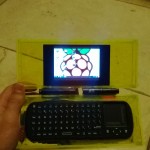 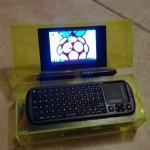 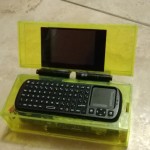 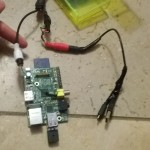 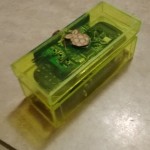 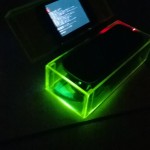 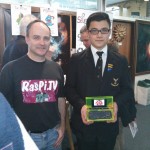 So there you have it – Porta-Pi! Stories like this make us very proud of the opportunities made for young people to become makers and engineers through Pi projects, as well as a gateway to STEM activity and career forming. Thanks to Jayme for providing instructions for us to share (we love sharing!), and thanks to David Whale and all others involved in guiding Jayme through his new passion. Here’s a picture I took at the Jam: |
Tales2Go Launches Netflix for Audiobooks Service, Aimed At Kids
|
As if this is something that we have been missing, there is now a Netflix type all-you-can-eat sort of service for audiobooks as well. Tales2Go, as the app is named however caters to only kids and has thousands of kid specific titles to choose from, all for a monthly subscription of $9.99 or $99.99 annually. The app, which started out in 2010 (with just 900 titles then) also allows the books to be downloaded so that these can be listed in offline mode. No wonder such a service has already proved to be extremely popular in schools where an annual license allows unlimited downloads on devices owned by the schools. A similar take-home license for the faculty and students will allow them to download the audiobooks on their respective devices as well. The app is currently available on both iOS and Android though the iOS version has recently been provided with an update. The Tale2Go version 4.0 now boasts of some additional features which includes a design makeover that suits the recently released iOS 7 version. Plus, the update also offers 'improved menus, multivariable search options, more book covers and information on each book, and shared bookmarks if the app is being used with a school'. Overall, a nice option for parents to keep their kids engaged to storybooks while also stoking their interest in books; all this while being kind to the pocket as well.
Tales2Go Launches Netflix for Audiobooks Service, Aimed At Kids is a post from: E-Reader News |







